Bremen Travel Guide – Things To Do in Bremen Germany
When exploring the rich cultural tapestry of northern Germany, one cannot overlook the myriad of things to do in Bremen, Germany. This historic city, nestled along the Weser River, offers a delightful blend of medieval charm and modern vibrancy.
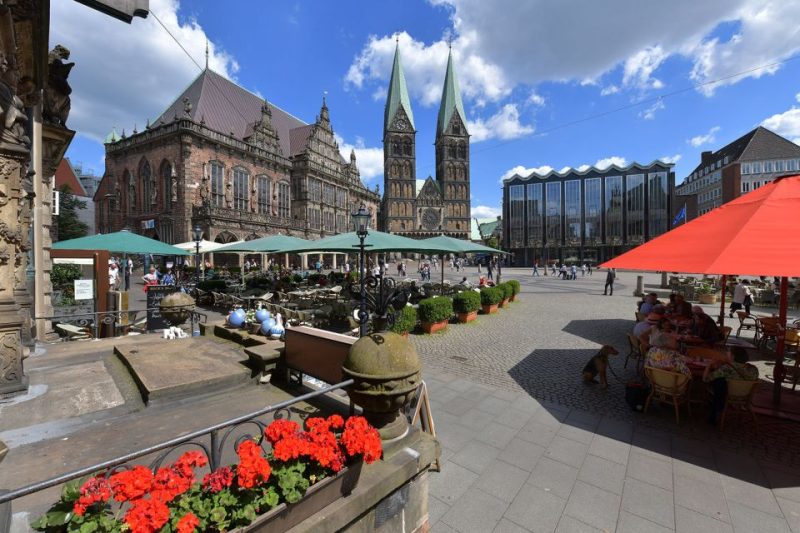
From wandering through the enchanting Schnoor Quarter with its narrow, winding streets and half-timbered houses to marveling at the grandeur of Bremen’s UNESCO-listed Town Hall and Roland Statue, visitors are treated to a journey through time.
The city’s maritime heritage is celebrated at the fascinating Übersee-Museum, while the lush Bürgerpark provides a serene escape for nature lovers. Whether you’re indulging in local culinary delights at the bustling Marktplatz or enjoying a leisurely boat ride on the river, Bremen promises an unforgettable experience for every traveler.
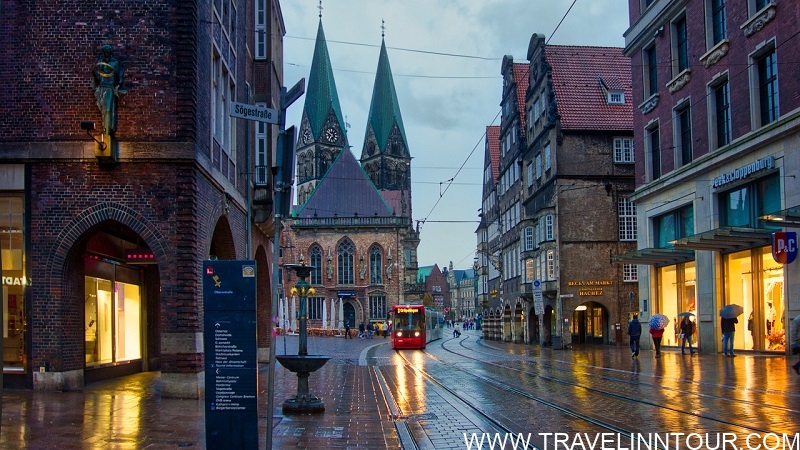
Weekend Escapes: Best Things To Do In Bremen
North of Bremen, you will find the old city district, where streets are flanked by historic buildings dating back to the 16th and 17th centuries. This area boasts beautiful green scenery and a lively cultural atmosphere, providing a range of entertainment options for visitors such as the sculpture garden in Knoops and Dunger Lake.
A scenic pedestrian route, known as the Maritime Mile, winds its way along the picturesque Wesser River in Vegesack, Germany, providing visitors with a one-of-a-kind experience. This vibrant district within the city of Bremen has evolved into a cultural hotspot, attracting artists and celebrating its rich maritime heritage, which played a significant role in shaping the country’s modern history.
Bremen-Mitte is situated on the eastern side of the Weser River. This neighborhood is not only centrally located in the city but also offers numerous cultural, artistic, and shopping options for visitors.
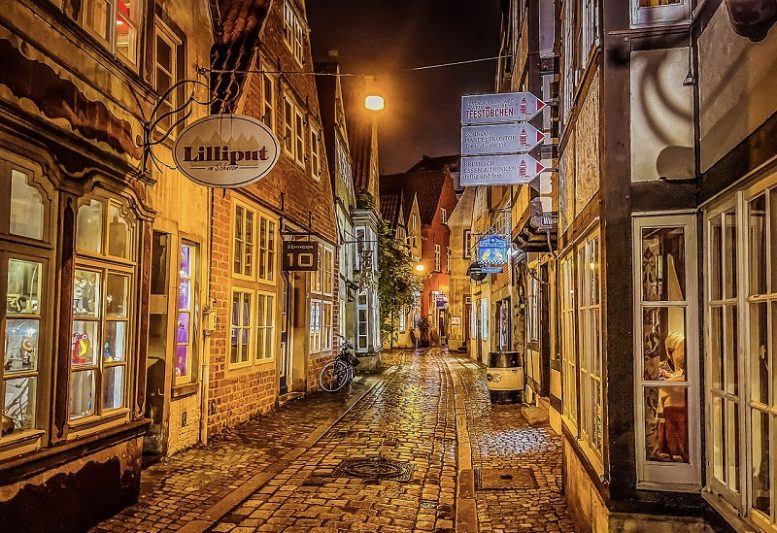
This vibrant district is renowned for its lively evening atmosphere, featuring a concentration of bars and entertainment spots along the scenic riverfront. Additionally, visitors can enjoy live music performances at various establishments and eateries throughout the area.
Bremen-Ost: Family-Friendly Things To Do in Bremen This Weekend
Bremen-Ost is located on the western bank of the Weser River. Within this area, you can find some of the major shopping centers in Bremen, including Haus der Wirtschaft, Forum, and Messegelände.
As you make your way from the main observation station, heading south down Bahnhofstrasse and Herdentorsteinweg, you’ll reach the bustling market area in approximately 10 minutes. Due to administrative purposes, Bremen has been segmented into five distinct city districts, comprising around 23 neighborhoods. The majority of the city’s attractions are concentrated around the central market, where the stunning city hall is located. Nearby, you’ll find the iconic Böttcherstrasse and the charming Schnoor Quarter, both waiting to be explored.
Located in a cost-friendly climate zone in northern Germany, Bremen experiences mild temperatures throughout the year. Its close proximity to the ocean means the city’s climate is also shaped by maritime factors. Winters in Bremen are typically snow-free, with only occasional snowfall.
Bremen History
Dating back to the 1st century, human habitations have dotted the banks of the Weser River in northern Germany, where the city of Bremen now stands. However, the city’s formal establishment is attributed to the 8th century.
In 787, Charlemagne designated the city as a key ecclesiastical center, elevating it to metropolitan status. Later, in 845, it was further elevated to an archbishopric, marking the beginning of a period of significant growth and prosperity for the city. The city’s fortunes continued to rise in 1260, when it joined the Hanseatic League, a powerful confederation of commercial cities in Northern Germany, and gained independence as a self-governing entity.
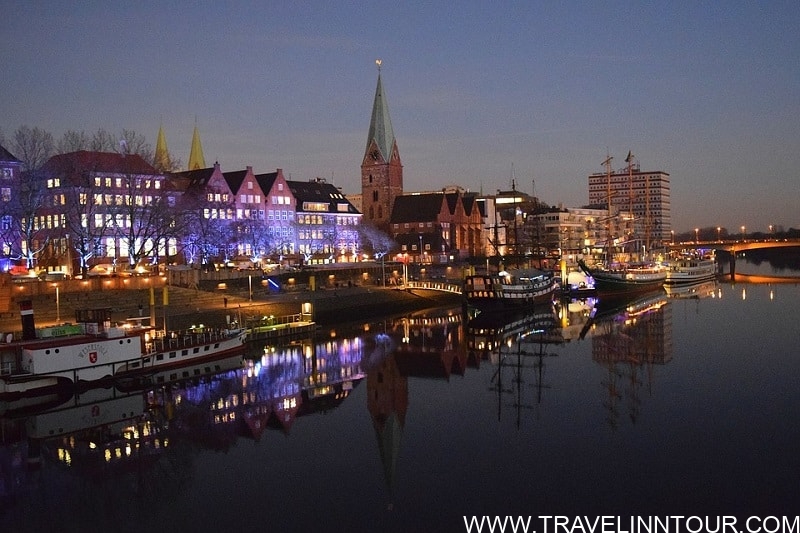
In this era, the symbol of Bremen known as the Roland statue, was built along with the city hall to symbolize the city’s autonomy.
Due to the Weser River’s growing sedimentation issues, a new section of Bremen was built on the river’s western banks from 1574 to 1590. The river’s silting also caused difficulties for merchant vessels to dock, leading to the construction of Germany’s first artificial harbor at the start of the 17th century. Additionally, Bremen was granted the status of Free Imperial City.
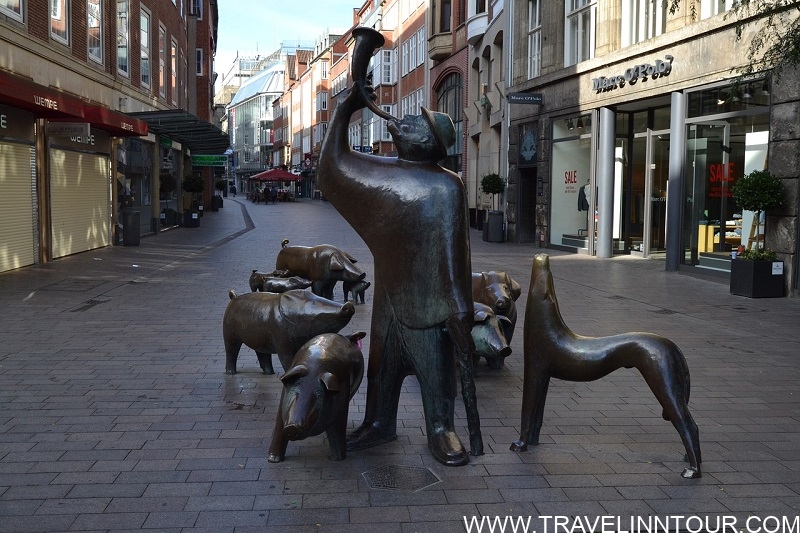
Between 1811 and 1814, Napoleon’s soldiers took control of Bremen. Throughout the 19th century, the city played a crucial role in the development trade, leading to the establishment of various shipping companies. As the economyived, Bremen’s population experienced a notable growth.
Bremen suffered significant destruction during World War II. It in 1947 and became part of the Federal Republic of Germany two years later. Town hall and the Roland statue in the market square were designated as UNESCO World Heritage sites.
Bremen Transport
Similar to other quaint German towns, Bremen’s attractions are conveniently clustered together, making it easy to navigate the compact city center on foot. The main train station is just a short 10-minute stroll from the bustling market square, the heart of the city.
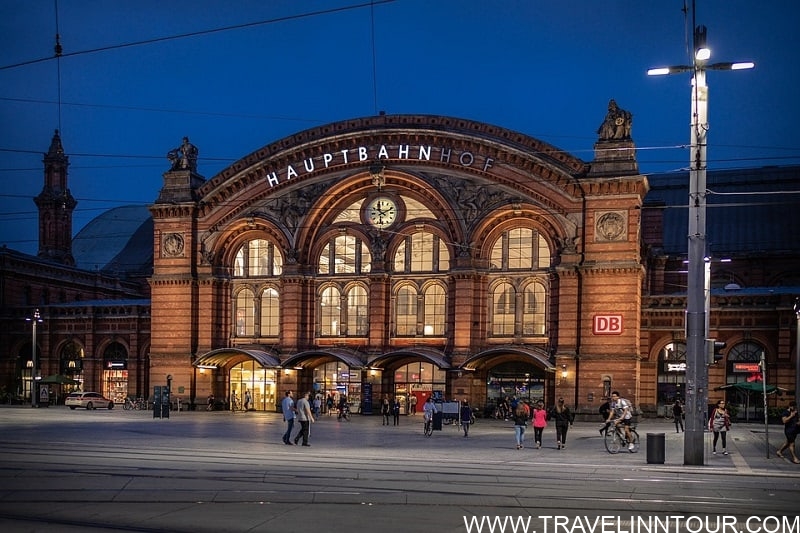
Besides other alternatives, bike rental facilities are also an option, allowing you to explore the region on two wheels. Moreover, it’s advisable to procure a detailed map of Bremen and its neighboring districts to ensure a smooth and enjoyable journey.
Public Transport
The majority of Bremen is covered by tram lines operated by the Verkehrsverbund Bremen / Niedersachsen, also known as BSAG, with around 10 different tram routes in service.
The BSAG also runs numerous regular bus routes. There are central hubs in front of the Hauptbahnhof and close to the City Hall. To find more information about routes and schedules, visit the BSAG website at www.bsag.de.
The duration of your Bremen trip hinges on your personal preferences. For a brief urban getaway, allocate two to three days to explore the city. However, if you’re keen on delving into its rich history, plan for at least four to five days to soak up the atmosphere of the old town, museums, and castle. Additionally, make sure to include a visit to the Bremen Fairgrounds, a highlight of the city that’s not to be missed.
Discover the Best Things To Do In Bremen: A Complete Guide
Town Musicians of Bremen (Bremer Stadtmusikanten)
One of Bremen’s most iconic attractions that comes to mind for most people is the iconic sculpture of the Town Musicians situated in front of the Unser Lieben Frauen church. Inspired by the beloved fairy tale “Bremer Stadtmusikanten” by the renowned Grimm Brothers, this bronze masterpiece was crafted by Gerhard Marcks in 1951, depicting a curious scene where a dog, cat, and rooster perch atop a humble donkey.
According to local legend, a gentle touch on a donkey’s nose is said to bring good fortune. While the charming miniature statue may steal the spotlight, the Church of Our Lady, located near the Town Musicians, is still a worthwhile destination to explore.
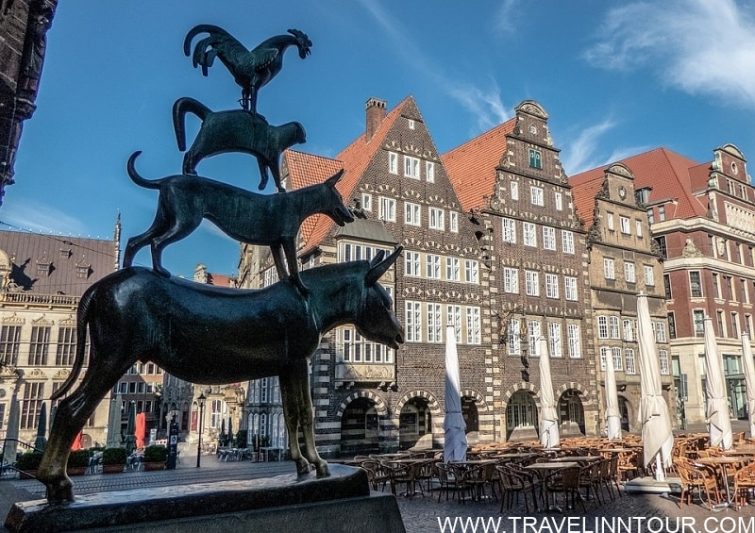
Windmil – Best Things To Do In Bremen for First-Time Visitors
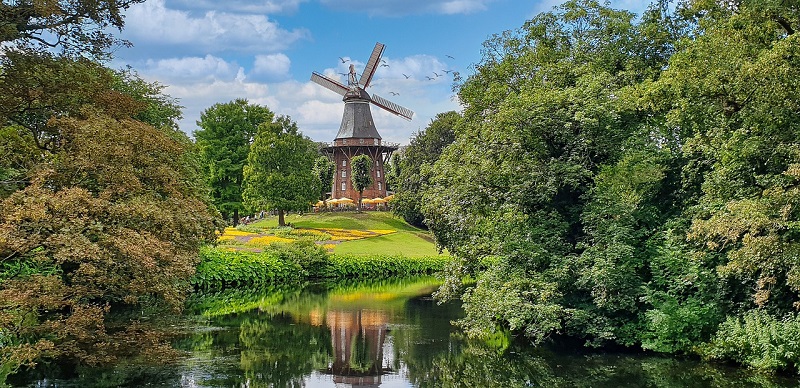
As you depart from the central observation station and make your way south along Bahnhofstrasse and Herdentorsteinweg, a picturesque scene unfolds before your eyes. A charming Dutch windmill comes into view, providing a stunning introduction to the unique charm and character of Bremen.
By continuing to walk, you will reach the heart of the city where you can find the main attractions, many of which are located near the renowned market of Bremen.
Roland Statue – Cultural Highlights: Best Things To Do In Bremen
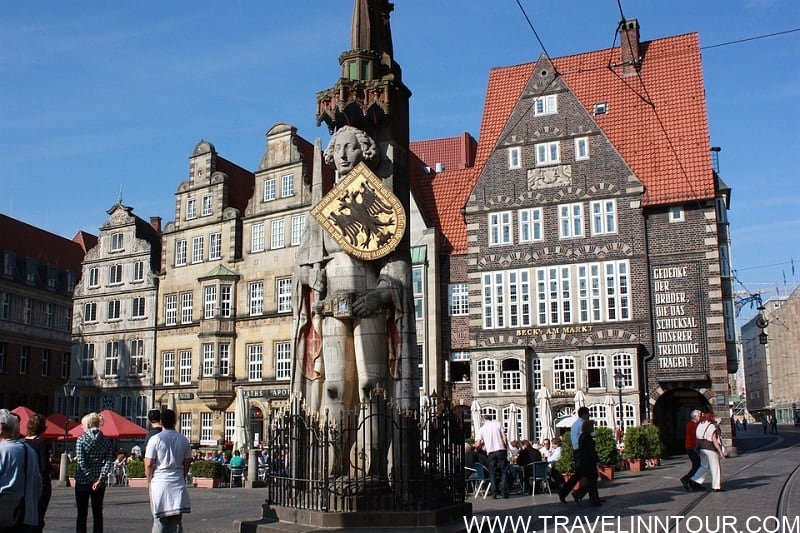
Beyond its status as a prominent landmark and UNESCO World Heritage site, the iconic statue of Knight Roland in Bremen’s marketplace is truly the heart of the city. Regrettably, the original 5.5-meter-tall helmeted head of the statue was lost during World War II and replaced with a replica.
However, the authentic piece can still be admired at the Dom St. Petri museum. This impressive cathedral, situated adjacent to Roland, dates back to the 11th century and towers over the bustling market square.
Night Walking Tour: Best Things To Do In Bremen at Night
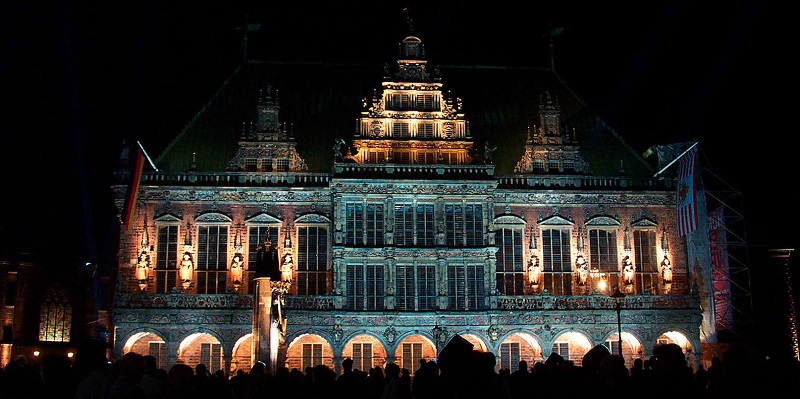
Set off on an extraordinary journey with the Bremen night walking tour, a memorable experience that explores the city’s deep-rooted history and vibrant cultural legacy. As dusk falls, uncover Bremen’s most intriguing and distinctive landmarks.
The tour starts at the primary observation point and moves on to the first square, the banks of the Weser River, the old part of town, and the contemporaryscape. Throughout the trip, the guide will point out unique features of each place, emphasizing important buildings from the Han dynasty, Weser Renaissance architecture, Baroque design elements, and the Bremen Cathedral.
Schütting + Haus der Bürgschaft
Across from the historic Old City Hall stands the Schütting, formerly the residence of the merchant guild. The trio of buildings on the market’s western side date back to the 19th century, while on the eastern side, a stark contrast is provided by the sleek, modern architecture of the Haus der Bürgschaft.
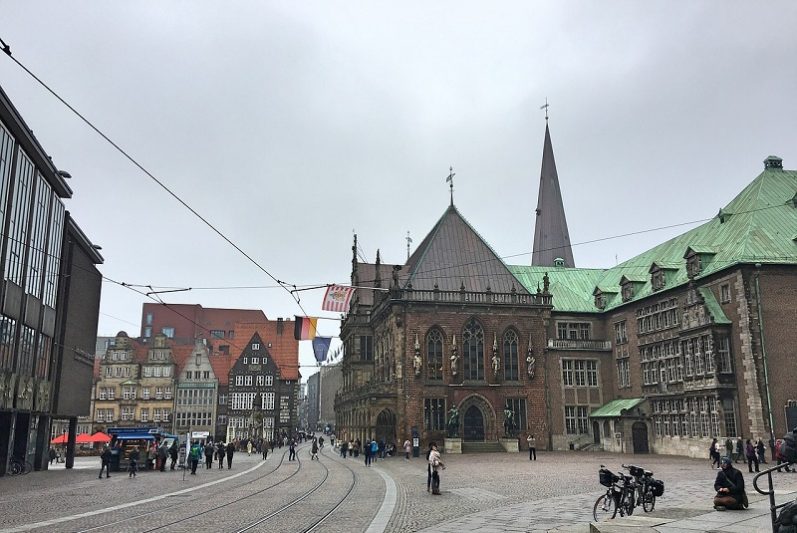
Bremen Underground Tour – Explore the mysterious World of Bremen.

Explore the ancient underground world of Bremen by delving deep into its history. Discover the city’s oldest prison cells and dungeons that were designed to be impossible to escape from, and learn about some of the most intriguing secrets and mysteries of the city.
The formerly foreboding dungeon has undergone a transformation and now serves as a museum, offering visitors a glimpse into history. From there, guests proceed to the underground level of the historic water tower situated on Bremen’s bustling Market Square.
Böttcherstrasse: Must-See Attractions and Things To Do in Bremen
Imagine you’re on a grand adventure, exploring the magical city of Bremen in Germany. You’ve been walking around, seeing all sorts of interesting things, when suddenly, you find yourself standing at the entrance of a narrow street right next to a grand old building called the Schütting. You look down this road and your eyes widen in surprise. This isn’t just any ordinary street – it’s the Böttcherstrasse, one of the most famous streets in all of Bremen!
Now, you might be wondering, what makes this street so special? Well, let me tell you a story. A long time ago, between 1922 and 1931 to be exact, some very talented people decided to build this street in a style called Art Nouveau. This is a fancy way of saying that they wanted to make everything look really beautiful and unique. They used red bricks to construct stunning buildings and gateways that are so amazing; they’ll make your jaw drop!
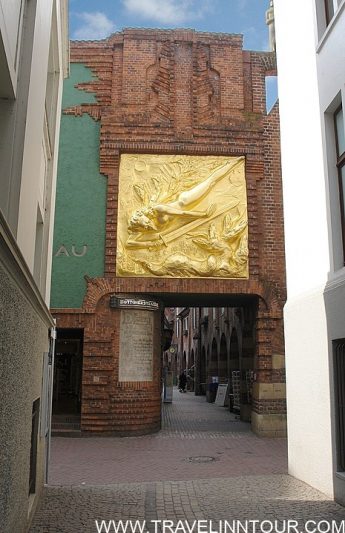
Visit Historic Schnoor Quarter
Schnoor Quarterin Bremen is considered one of the city’s oldest and most delightful neighborhoods. Once known as one of the poorest in Bremen, it has transformed into a picturesque area with narrow streets, cobblestone alleys, and quaint churches that still retain their charm today.
The nautical spirit continues to thrive in Schnoor, a village that was originally conceived with shipbuilding in mind. Presently, visitors can explore a variety of shops, cafes, and eateries that cater to the general public. The old wooden-framed houses, many of which have been in the same families since the 1600s, have been meticulously restored to their former glory.
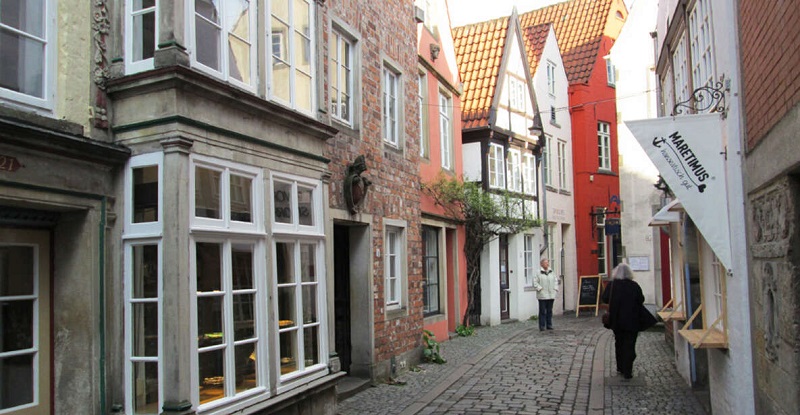
Local Festivals and Events: Seasonal Things To Do in Bremen You Can’t Miss
There are events and festivals in Bremen all 12 months lengthy. Some of them are pretty huge and renowned and should not be missed.
Eiswette Festival
The Eiswette Festival is a yearly celebration in Bremen that occurs on January 6th, which is also recognized as Epiphany or Three Kings’ Day. This 1829, is hosted at the Bremen Ratskeller, a renowned wine cellar with historical significance. During the festival, participants from the Eiswette society engage in a distinctive custom of placing wagers on whether the River Weser will freeze during the winter.
Ice cubes are placed in a glass of water to make bets and if they stay frozen until midnight, the bet is successful. In addition to this, the festival features a fancy meal, speeches, and entertainment, making it a well-liked and valued occasion in Bremen’s cultural schedule.
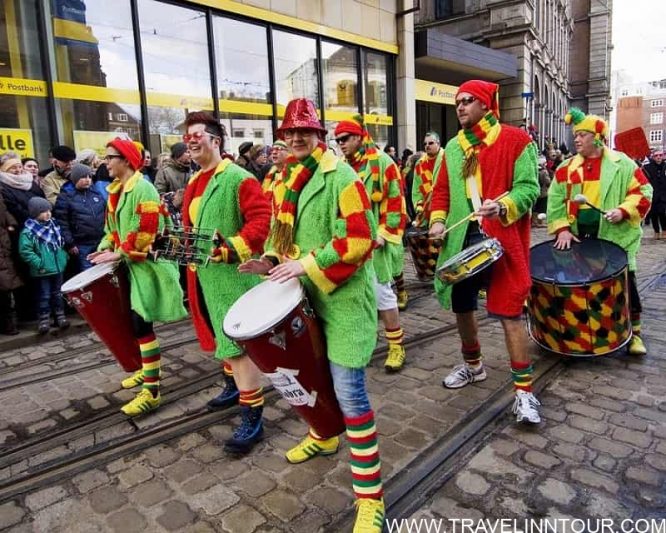
Schaffermahlzeit Festival
Every year, the city of Bremen comes alive with the Schaffermahlzeit Festival, a vibrant celebration of its maritime history and customs. This time-honored event, which has been a part of Bremen’s cultural fabric since the 16th century, pays homage to the Schiffergesellschaft, a guild comprised of shipowners and captains.
At the heart of the festival lies the opulent Schaffermahlzeit banquet, where attendees indulge in a delectable array of traditional delicacies like smoked eel and succulent roast beef. This feast is a true feast for the senses, allowing guests to savor the flavors that have been enjoyed by seafarers for generations.
Beyond the culinary delights, the festival offers a myriad of activities to immerse oneself in Bremen’s seafaring heritage. A lively parade winds its way through the city streets, showcasing colorful floats and captivating performances. The air is filled with the enchanting melodies of live music, adding an extra layer of excitement to the festivities. Cultural activities abound, providing visitors with an opportunity to explore Bremen’s rich history and traditions.
The Schaffermahlzeit Festival is a truly unique experience that allows attendees to step back in time and witness firsthand the vibrant atmosphere of this historic city. It is a celebration that not only honors Bremen’s maritime past but also serves as a testament to its enduring cultural legacy.
Bremer Karneval
Carnival in Bremen, Germany, known as Bremer Karneval, is a vibrant and eclectic celebration that brings the city’s streets to life with a unique blend of traditional and contemporary festivities. Unlike the more famous Rhineland carnivals, Bremen’s version is distinguished by its multicultural influences and emphasis on artistic expression.
The event typically features a grand parade with elaborate costumes, masks, and floats, accompanied by lively music ranging from samba to brass bands. Street performances, theatrical acts, and dance troupes add to the festive atmosphere, making it a colorful spectacle that attracts both locals and visitors. The Bremer Karneval not only celebrates the pre-Lenten season but also showcases Bremen’s rich cultural diversity and creative spirit.
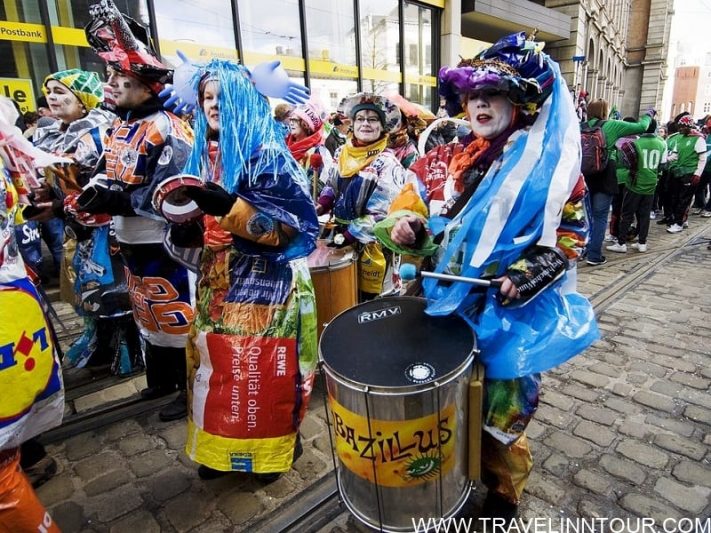
Breminale
Every year, the city of Bremen in Germany hosts Breminale, a massive outdoor celebration of music and culture that draws in crowds of thousands. This popular event features a eclectic mix of musical styles, spanning rock, pop, electronic, and global sounds, with both local talent and international stars taking to the stage.
But it’s not just about the music – Breminale also offers a wide range of culinary delights and refreshments, as well as thought-provoking art displays and other cultural attractions. The festival unfolds over several days in July, filling the air with energy and excitement for all who attend.
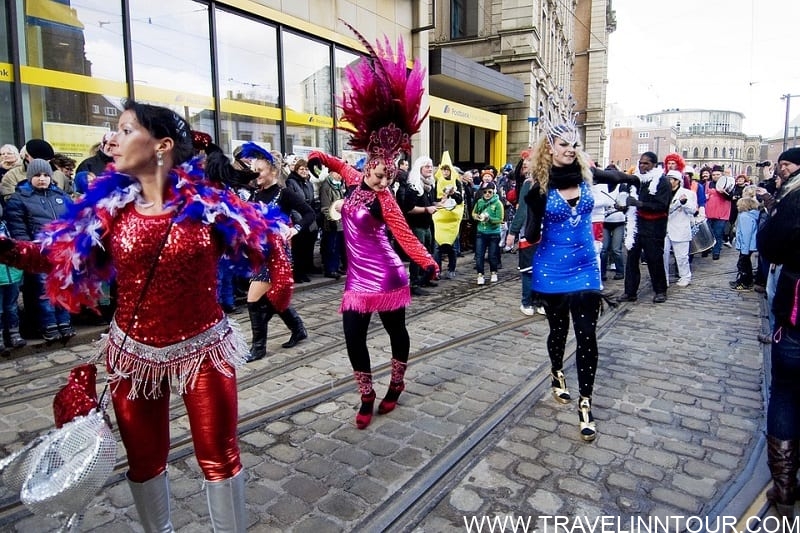
Musikfest Bremen
Musikfest Bremen is a prestigious annual music festival held in the historic city of Bremen, Germany. Established in 1989, the festival has grown to become a significant cultural event, attracting world-renowned musicians and ensembles from various genres, including classical, jazz, and world music.
Spanning several weeks from late August to mid-September, Musikfest Bremen features an array of performances in iconic venues such as the Bremen Cathedral, the Glocke concert hall, and the picturesque town hall. The festival is celebrated for its eclectic programming and commitment to artistic excellence, offering audiences an immersive experience that blends traditional and contemporary musical expressions.
Christmas Markets
The Christmas Markets in Bremen, Germany, are a festive spectacle that transform the historic city into a winter wonderland each December. Centered around the UNESCO World Heritage site of Bremen’s Town Hall and Roland Statue, the markets feature over 170 beautifully decorated stalls offering a variety of handcrafted gifts, seasonal treats, and traditional German delicacies.
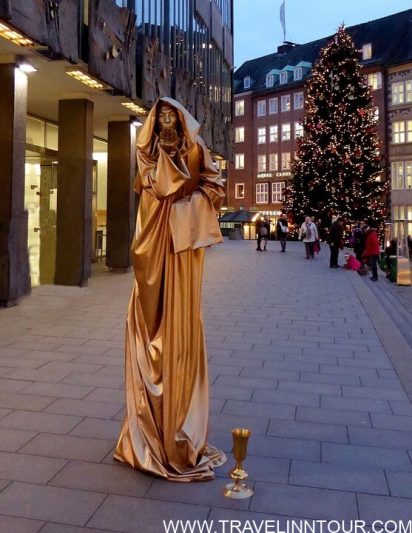
The air is filled with the enticing aromas of mulled wine, roasted almonds, and gingerbread, creating an enchanting atmosphere that draws both locals and tourists alike.
Highlights include the Schlachte-Zauber along the Weser River, where medieval-themed stalls and twinkling lights reflect off the water, adding to the magical experience. With its blend of historical charm and festive cheer, Bremen’s Christmas Markets are a must-visit destination for anyone looking to immerse themselves in holiday spirit.
Best Places To Stay In Bremen Germany
Bremen, Germany, has a range of excellent lodging options to suit various preferences and budgets. The Radisson Blu Hotel in the city center offers a luxurious stay with modern amenities and picturesque views of the Weser River.
Travelers looking for a mix of history and comfort will find the Atlantic Grand Hotel Bremen near the historic Market Square and Bremen Town Hall appealing. For a more intimate experience, Hotel Munte am Stadtwald provides a peaceful retreat by the lush Bürgerpark.
Those on a budget can choose the Ibis Styles Bremen Altstadt, which offers affordability and a central location. Each of these choices guarantees a memorable visit to this delightful Hanseatic city.
Save it On Pinterest
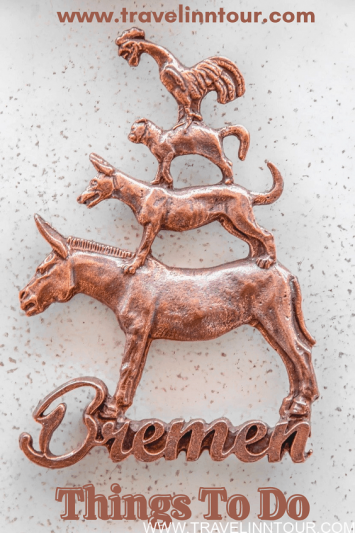




Be the first to comment